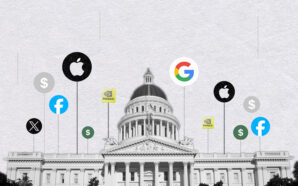What’s really new at CES® 2018? This year, CES will be a gathering of professionals from almost every industry. Together they will architect the technological evolution of human interaction and communication. CES has transcended its “consumer electronics show” initialism, and now it tells a story of innovation unlike any we’ve seen before.
The Buzzwords
Last year’s megatrends of on-demand, machine learning, and autonomy have given way to this year’s buzzwords: AI, Blockchain, and AR. The anecdotal statistics are astounding. Everyone says they have AI projects in the works, AR projects are becoming ubiquitous, and even complete technophobes are talking about Blockchain (the underlying technology of cryptocurrencies such as Bitcoin) and other distributed ledger projects as if they were experts.
The non-buzzwords paint an equally astounding, albeit more serious, picture. Social media addiction and the related creation of echo chambers and increased tribalism have changed the social fabric of our nation. Enhanced automation and robotics are replacing workers more quickly than most people expected. Exponentially paced changes in media, distribution, retail, marketing, and advertising are seriously disruptive forces. And it is now crystal clear that to be competitive, every company must have world-class tech capabilities.
The Innovation Series at CES
Every year, we host the Innovation Series breakfast at CES. It’s an invitation-only gathering of leaders in technology, media, entertainment, marketing, government, and finance. This year, we are going to tackle some of the biggest technological and sociological issues with a remarkable set of Socratic discussions and presentations.
Responsible Innovation
We have questions: Can self-driving cars ever be safe? How dangerous is Alexa? Will artificial intelligence (AI) take my job? Do cryptocurrencies empower terrorists? Can a cardiac pacemaker be hacked? We have concerns: Fake news, fake ads, fake accounts, bots, foreign governments interfering with our elections … Is technological innovation good or bad? David Sapin, Principal US Advisory Risk and Regulatory Leader, PwC and I will discuss the three basic approaches to regulating innovation – but should we even try?
Ecosystems and Interfaces
How does one of the biggest tech manufacturers in the world see the future? I’ll chat with Tim Baxter, CEO, Samsung Electronics America about how Samsung sees the evolution of ecosystems and human/machine interfaces. Samsung makes more phones and televisions than just about anyone. But recently it has begun a transition from a hardware company to a connected solutions company. As consumer demands evolve, Samsung hopes to create innovative, connected experiences that completely reimagine what is possible – and ultimately create a shift in consumer behaviors. Are we near the end of handsets? If so, what’s next?
Identity vs. Identifiers
One of my primary theses is that everything that can be connected will be connected. Which means that every physical product can and will have a digital twin. For this to happen, connected physical “things” and their digital twins must be specifically and uniquely identified – giving rise to hybrid identity that bridges a physical product with its digital instance. This will create an incredible amount of data, and it should fuel demand for decentralized data schemas (such as distributed ledgers) and accelerate consumer desire to control what can be fed back to central authorities or third parties. Can we achieve ubiquitous, real-time digital identity delivered in standard and interoperable ways? Should we? Is there a way to protect identity but still identify everything? I’ll discuss how this might work with Bob Carpenter, CEO of GS1 US.
AI: Myth vs. Reality
AI is definitely one of “the” buzzwords of 2018, but we’re going to cut right to the chase. Barak Turovsky is the Head of Product & Design, Google Translate and Machine Learning. In case you are wondering, Google Translate is the largest AI project on the planet. Barak is going to help us get past the mythology of AI and present a case study describing what happened when Google moved Translate from a machine learning environment to an AI environment. The results are nothing short of awe-inspiring. This discussion should inform your thinking about the near-term uses for AI in your business.
CES Is People!
Our Innovation Series at CES is a microcosm of the story of innovation you’ll find everywhere at CES this year. We’re going to think through what it means to responsibly approach innovation, look to the future of human/machine interfaces, reduce the buzzwords and hype to actionable insights, take a good look at the tactical requirements for an Internet of Everything, and deep dive into practical uses for AI and human/machine partnerships. A big shout out to Gary Shapiro, Karen Chupka, and the whole CTA team for their central role in CES’s incredible story of innovation.
You can request an invitation to the Innovation Series Breakfast at CES 2018 here.
Author’s note: This is not a sponsored post. I am the author of this article and it expresses my own opinions. I am not, nor is my company, receiving compensation for it.






